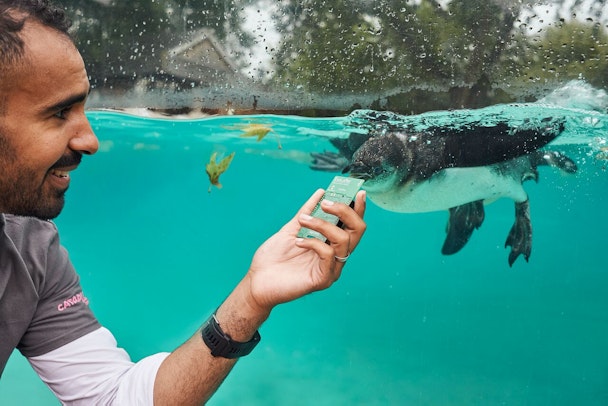What a penguin can tell us about the connected world
The internet of things (IOT) is a good buzz word – it brings about visions of a dystopian future where you can flirt with your toaster, via Whatsapp.

Penguin sensor
Even penguins are on board now – with Digital Catapult and ZSL providing them with their very own IoT sensors. They’re used to track unusual behaviours that might unveil potential environmental change.
But while we know what a penguin might be doing the other side of the world – why do we still watch a person shower to see how we might design a shampoo bottle?

Even today, we’re still using observation and opinion based feedback to develop products and understand markets. But the problem with human beings, is they lie. We lie to fit in, we lie to be ‘normal’. When asked to act normal, whilst a team of scientists watch you eat a bar of chocolate through a two-way mirror, all we can think about is how we should be eating that bar of chocolate. Or worse, we’re asking focus groups to imagine using new products, when half of our behaviours are subconscious.
The popularity of IoT and internet connected objects, has caused technology prices to drop considerably which has brought about a new possibility for testing and developing products. Real life usage data, not just in software, but objects too. No opinion. How is something used? What are the behaviours and patterns? What are the quirks? All of these questions answered, without scenarios that create observational bias.
We’ve spent the last few years solving this problem. We’ve seen some the craziest and weirdest things, from the strange ways people eat food to the patterns and science behind an orgasm.
In South East Asia, we accidentally uncovered the weird truth behind chocolate lovers.
Conventionally, it had been assumed that a family bar of chocolate would be divided along the squares and eaten in pieces. This had been common understanding in every focus group and observation test. We wanted to remove the observation from these tests, let people relax and forget about their guinea pig status. Our team designed a sensor that could be stuck to a chocolate wrapper, thin and out of the way, collecting information on movement, temperature and time.
Incredibly, an overwhelming portion of the group eat family-size sharing bars of chocolate, whole like a sandwich. No squares, no breaking. Whole. Bite by bite. They also fail to follow the easy open guides on packaging, and prefer to wrestle their (usually refrigerated) milk chocolate open. Weird, right?
See this is the problem with human beings. We lie – to avoid ‘weird’.
But with human insight sensors, all observation is forgotten, our consumers have the space to be strange.
Similarly, in working with an airline, this human problem occurs again. The majority of behaviours and patterns are totally involuntary, so can’t be recorded. This is only further accentuated in long-haul air travel, when you’re hardly human. Eight hours into the flight you are not competent to report your opinion on a pair of headphones that feel like every other pair you’ve ever used.
In a project to consider what the future of flying might be, all the best experiences in the world might be irrelevant if we can’t understand our customer. They had previously recorded customer feedback in a dark meeting room, following a long-haul flight. Coupled with a mini pencil and a score sheet, our customers would quickly divide into two groups: ‘Everything is great, let me leave’ and ‘Everything is awful, here’s an essay’. When taking an average of these two extreme data points, a large enough sample size would show averages that looked like interesting data.
We built sensors into every test product. How did they actually wear those headphones? What is the pattern of movement? How are you sat in that chair? If you get up every half an hour, whilst watching a three-hour film, should we look at pressure points in your chair? Opinion can feature, but the important data is what Really happens, when we’re not thinking.
This is the next step for marketeers: not just pushing products to your consumers, but focussing on understanding real human behaviour. With the price of sensors coming down, it’s entirely possible for marketing to lead this technology development, without significant R&D budgets or expertise.
In a world that’s only accelerating, the consumer expectation for a product to be perfect is overwhelming. In response, brands can no longer afford to cut corners in understanding usage and building operations capable of continuous development.
Josh Valman is the CEO of RPD International
